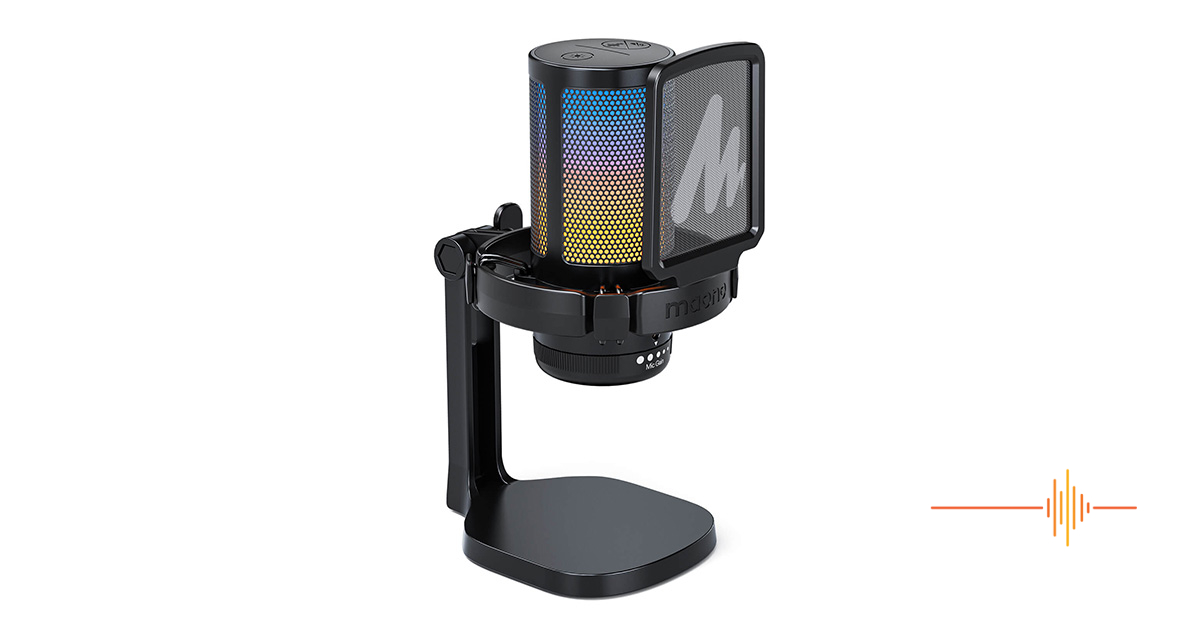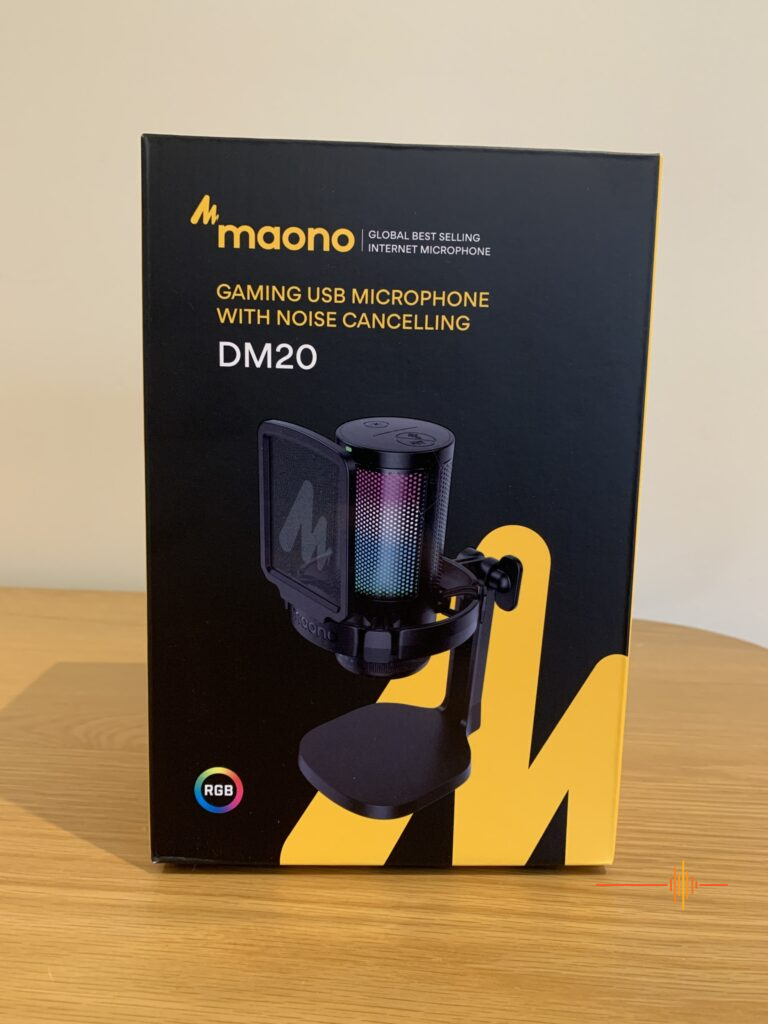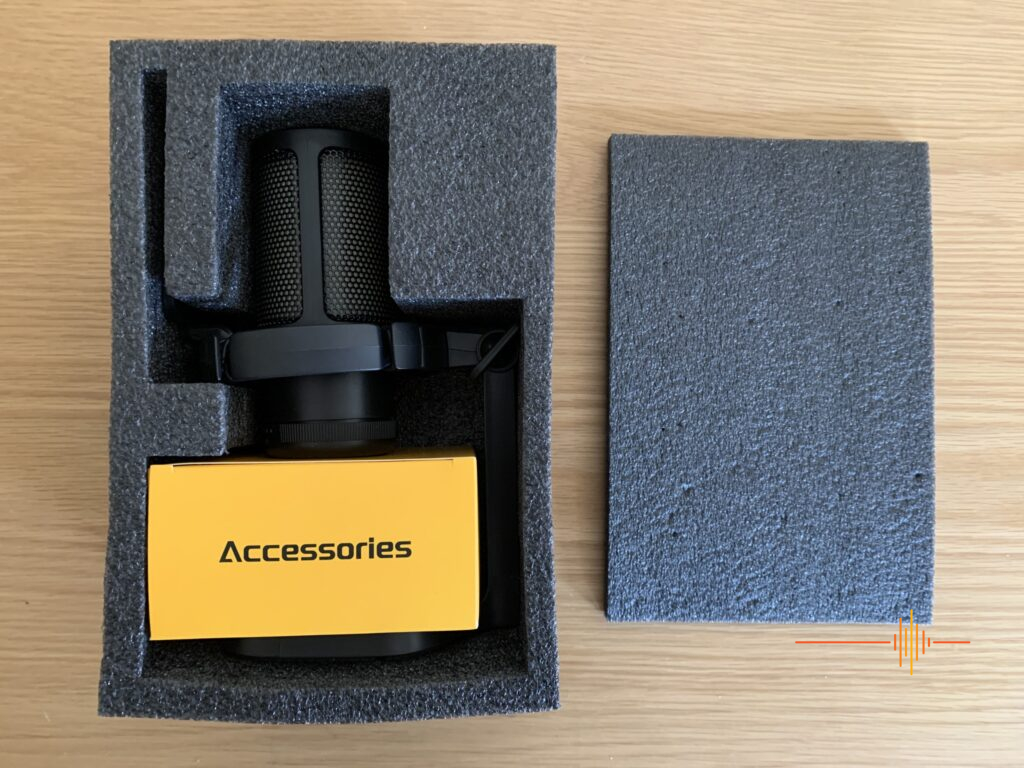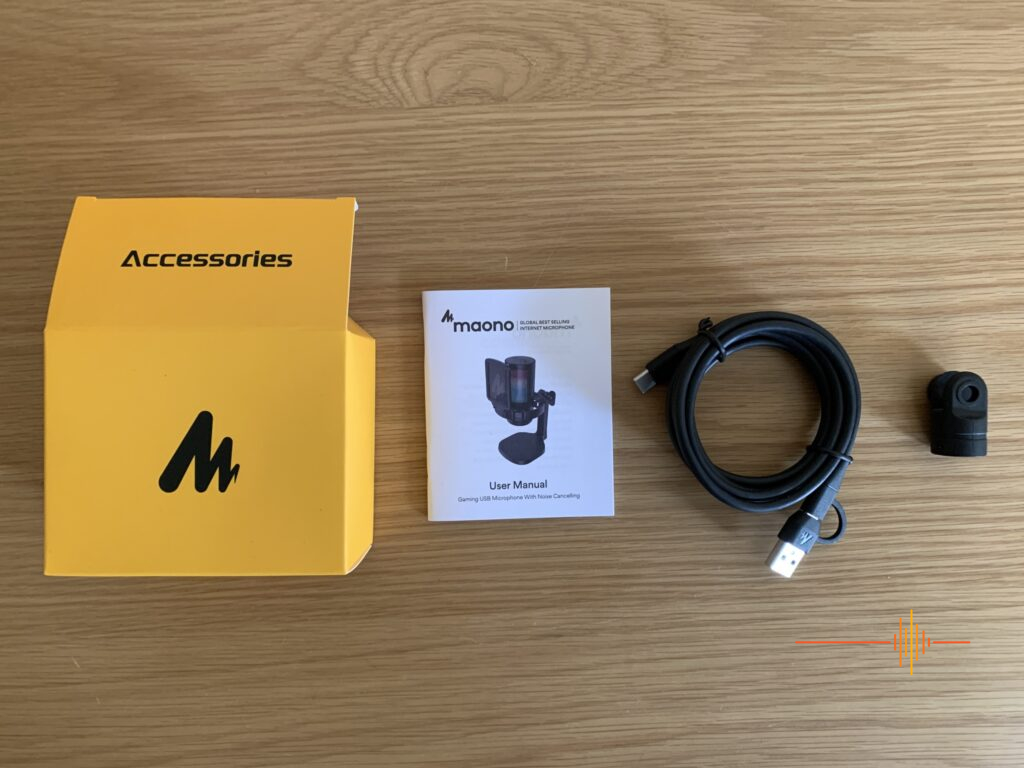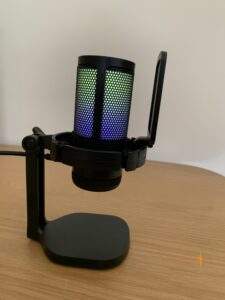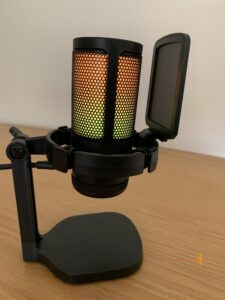Something few people don’t know about me – because I bring it up whenever I can – is that as well as being a full time teacher I sometimes do gigs as a voice actor. Over the last 10 or so years, my voice has been recorded for many different commercials and corporate videos as well as a handful of cartoons, documentaries and video games.
These gigs have been few and far between over the last few years. This is partly because of COVID but mostly because of my full time teaching schedule. I have always wanted a home studio for making recordings on my own schedule and bringing my career back to life. When the editors at DRN asked me to test the Maono DM20 gaming USB microphone I got very excited. Then I saw the price – $54. I feared that there was no way that a microphone at that low price could satisfy both my agents and my clients. It turns out I was wrong.
First Impressions
The Maono DM20 is very light weight (my colleague has a Blue Yeti Microphone at school and it weighs as much as about 10 Maono mics). It is beautifully presented in the case with a cute little box of accessories and a meaty manual, see below. There is a lot of foam packaging to protect it which always makes me a bit sad but it makes sense as Maono is a global brand based in Shenzhen, China. On their website they claim to ship to 153+ countries and to be the global best selling microphone. At its current price, I’m not surprised!
The microphone, pop filter and shock mount all come fully attached and secured to a desktop stand. The Maono DM20 comes with an alternative fastener for boom arms and a USB-C to USB-C cable. They also attached a USB-A adaptor to the cable to make it easily work with any computer.
Set Up
The Maono DM20 could not have been easier to set up. There was no associated software and it is a straight-forward plug and play device. Any adjustments can be made through buttons and knobs on the device itself. There is an adjustable gain knob that moves pretty smoothly and is really handy for testing purposes. On top of the microphone there is a mute button. Tapping the button mutes it and and holding it down toggles a ‘noise cancellation’ function designed to reduce atmospheric sound. There is also an ‘RGB’ lighting switch.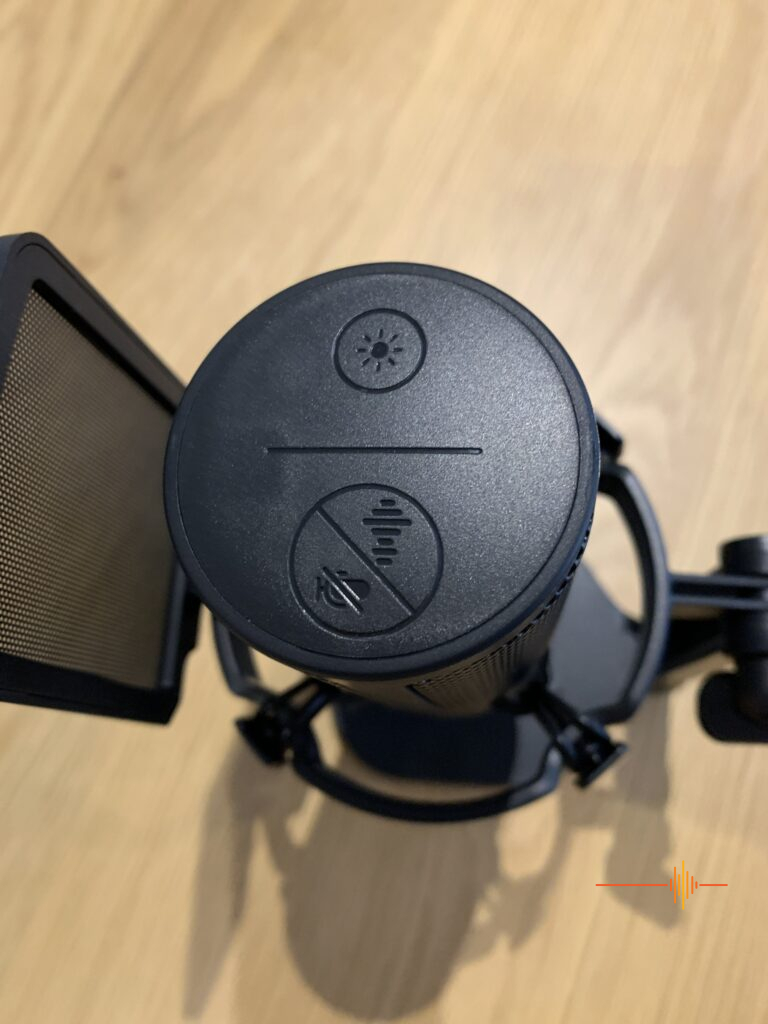
I don’t know if coloured lights are really in at the moment or if it’s just a coincidence that everything I’m reviewing these days has a coloured light function. That said, it’s a really clever design feature. As well as making the microphone look really fun, the colours let you know when the noise cancellation function and the mute button have been turned on. There are 9 different presets for the lights that are well detailed in the manual.
Finally, I’d like to take a moment and congratulate Maono on including a proper manual, especially one as useful as this. I’m an old man and love a bit of help working out the many different functions of new technology. Sometimes, I learn about the special features or functions of my devices after a good year of regular use.
In Use
The technical specifications outlined in the manual are really impressive, so allow me to briefly geek out. This microphone is a condenser microphone and syphons phantom power directly from the computer without the need of a phantom power box. Condenser microphones are much better than dynamic microphones at picking up delicate and higher frequency sounds but they need a low level ‘phantom’ power source to function. The Maono also has a Cardioid polar pattern, which basically means that it has been designed to perfectly pick up sound from one side and block out sounds from the other.
The frequency response curve looks pretty flat with a few small boosts in the middle and upper frequency ranges. This is actually a good thing as it means that the microphone will pick up a wide range of sounds evenly without bursting or causing feedback. The frequency response range is very wide going from 50Hz – 20kHz which makes it a versatile and highly sensitive microphone. The fact that this has a noise cancelling function is really interesting and I wonder if it might change the frequency response pattern to a more shaped curve. 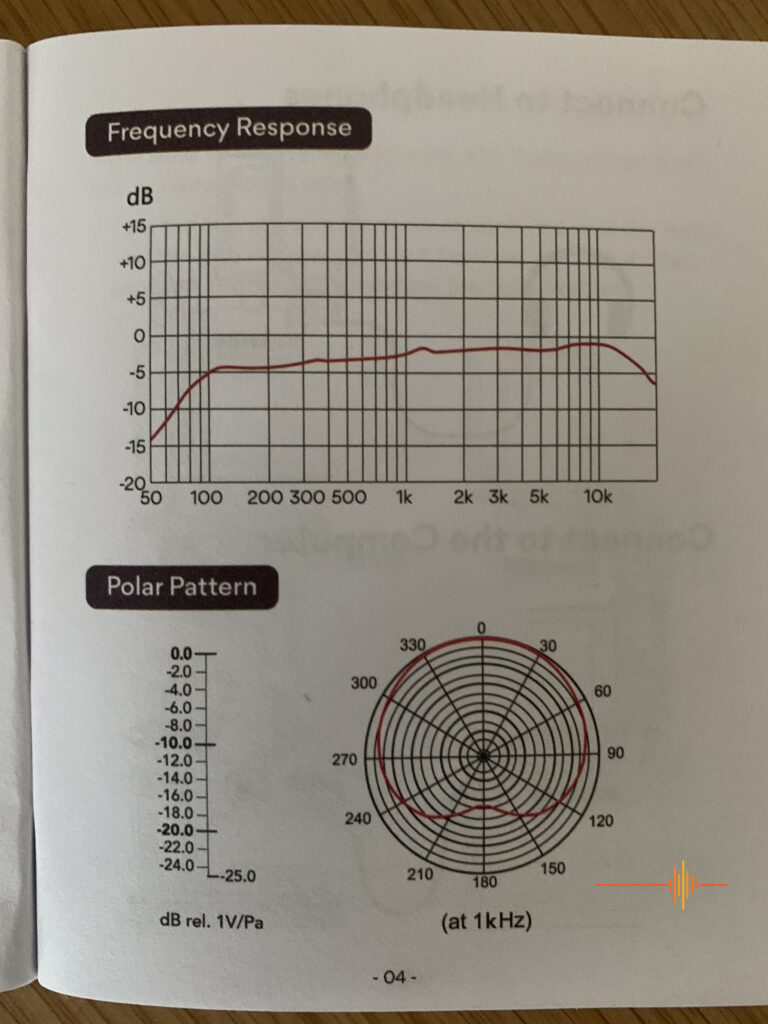
As soon as I got the Maono set up I attached it to my Mac and pulled up GarageBand to see it in action. I started by playing with the gain knob. It was so smooth! I made very small adjustments and still saw it change the quality of the sound. Once I found the sweet spot I hid in my wardrobe and recorded a few basic speaking tracks. The quality of the sound was so good that I decided to send it to my agent to see what they thought. They told me that the sound was good enough for recording tracks but that there might be an issue in live recording sessions because of the USB connection. This was way more than I expected, a greenlight for recording!
The noise cancelling function worked well but wasn’t something that I would recommend doing for a professional recording. The sound quality was ok, and would be perfect for recording in a noisy room but it’s so much warmer and fuller without the function on. I recorded a few different instruments and a few squeaks from my son and it all worked as advertised. A slightly stronger sound in the higher frequencies but overall a very flat and even sound.
Gripes
Realistically, I don’t know enough about microphones to find anything notably wrong with this. Everything I recorded sounded really full and clear. The fact that my agency gave it a greenlight is a huge endorsement for the sound quality. It is very small and lightweight which worries me about its durability and build quality. The fact that it doesn’t come with any software may also be a drawback to some users. However, there are plenty of great free software options to support it.
Conclusion
I feel very confident in recommending the Maono DM20. It is a highly versatile microphone with a great sound quality. It’s particularly good for recording human voices but I would happily use it to record a track or two on my guitar. The lights are also really fun. It’s hard to imagine that anything priced this low could be this good. It’s clear why this has sold so well around the world. It is also available for purchase from Amazon.
DRN would like to thank Maono for providing the review unit.


